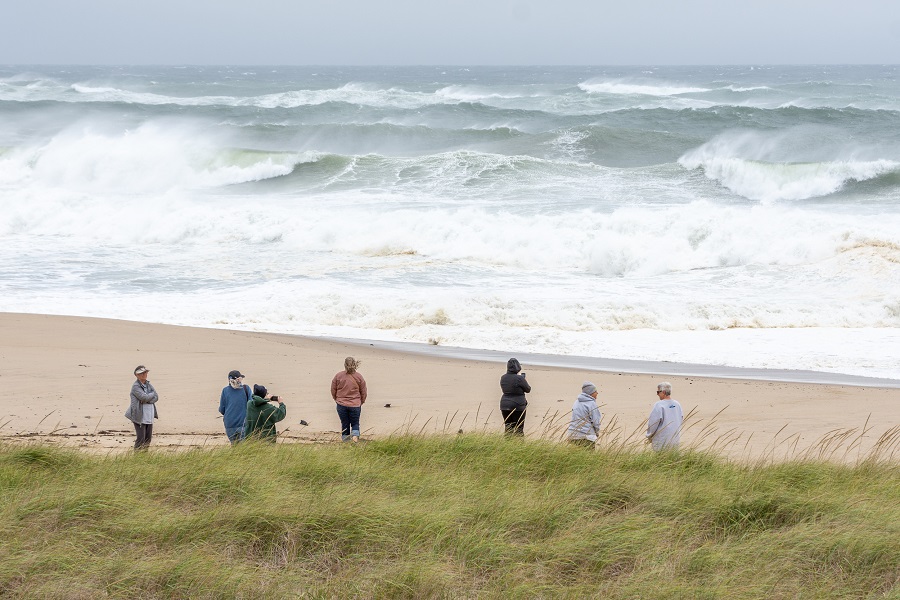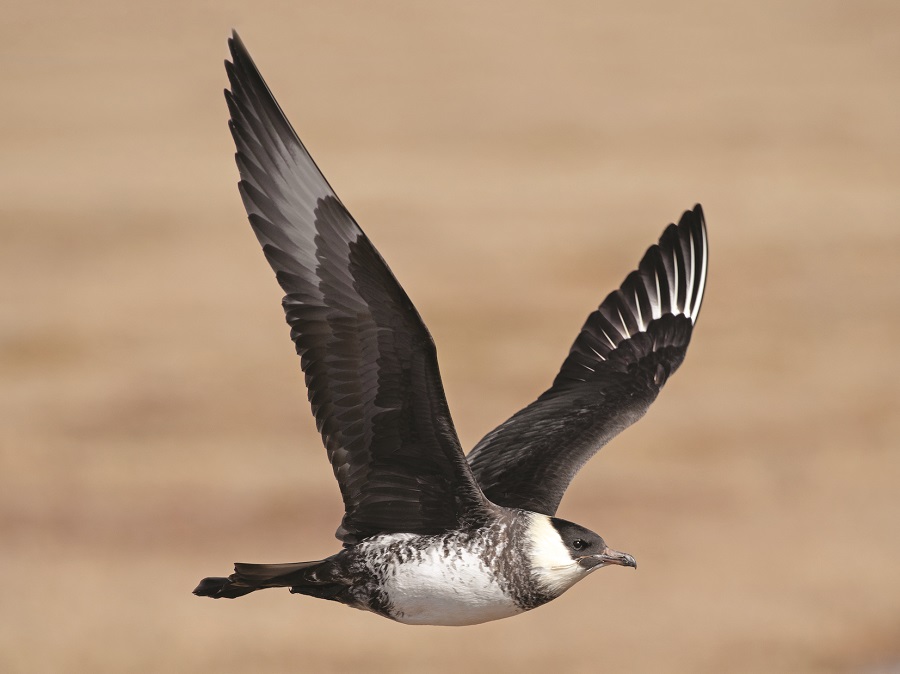The night before Hurricane Lee tore through the coastal waters of Massachusetts, most Cape Codders were stocking up on food and hoping the storm wouldn’t hit too hard. Birders, meanwhile, were hoping it would get stronger.

“You never know what might show up,” said Nicholas Block, a birder who drove here from Easton to watch the storm arrive. The strong winds that hurricanes generate can blow birds that are usually found miles out at sea close to shore, and birders will travel far to catch a glimpse of them. Block was one of dozens of birders at Eastham’s First Encounter Beach on the morning of Sept. 17 when the storm was at its peak.
With the wind at the beach gusting over 50 mph, blasting the parking lot with sand and making it nearly impossible to stand outside, the birders took shelter in their cars, using them as makeshift blinds and scanning the waves with binoculars and spotting scopes. “You don’t want to miss out on that one rare thing that the storm happened to bring in,” Block said.
Janice Strong, a birder who drove from Chelmsford, saw her first ever pomarine jaeger Saturday morning. Jaegers are big, burly seabirds that are usually found well offshore, but Strong saw one fly directly over her car.

Evan Griffis, a birder and biologist working at Mass Audubon’s Wellfleet Bay Wildlife Sanctuary, saw his first-ever great shearwater that morning, too. Shearwaters spend most of their lives far offshore, regularly going months without ever touching land.
Jaegers and shearwaters were not the only seabirds blown into Cape Cod Bay by Hurricane Lee. Red-necked phalaropes, a species of shorebird that hunts by swimming in circles on the surface of the water, appeared by the hundreds. A handful of Leach’s storm-petrels, strange black seabirds that bounce along the water’s surface and hunt by smell, hopped along the waves just off First Encounter Beach. A Sabine’s gull, a seabird that is rare even far offshore, flew by at noon, though many birders had left by then.
First Encounter Beach is the perfect spot to watch birds during a storm like Lee. The north wind brings birds to the southern shore of the bay, and from there they try to head north to reach the open ocean again, passing within sight of land at First Encounter.
Seeing rare birds this close to shore can be addictive. “It’s hard to leave, because you don’t want to miss out when that one super-rare thing comes by,” Block said. Many birders spent four or five hours in their cars in the pounding wind, waiting for that next seabird to fly by.
For some, Hurricane Lee was not strong enough. “It’s a little bit disappointing what the wind is doing right now,” said William Freedberg, an Eastham birder. “I honestly wish that it was a little bit stronger.” Stronger winds will sometimes blow in birds from even farther offshore. “If it’s not actively painful to bird, it’s not going to do anything interesting,” he said.
But Janice Strong had no complaints. She could not stop thinking about that pomarine jaeger. “That bird made the trip worth it,” she said.



